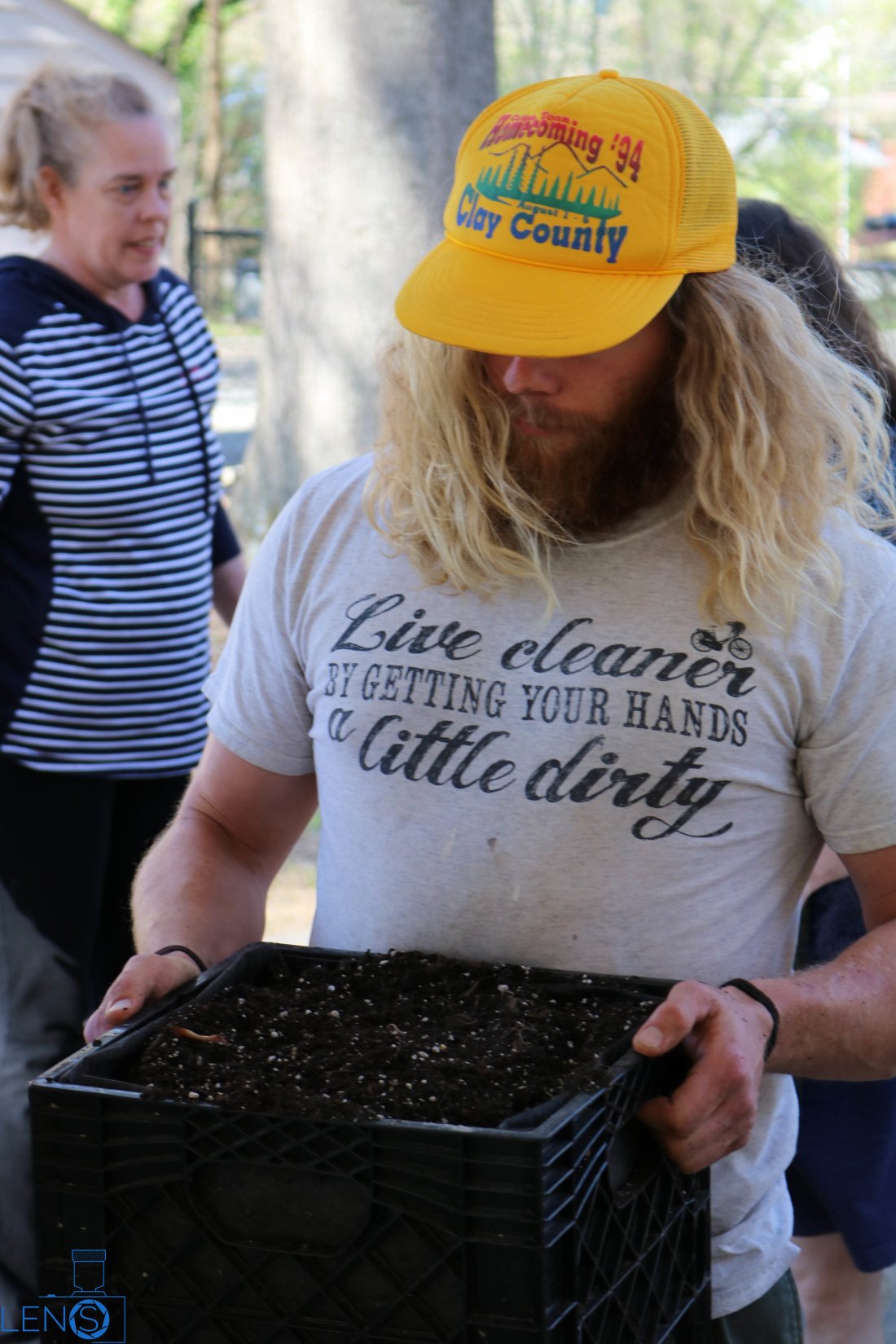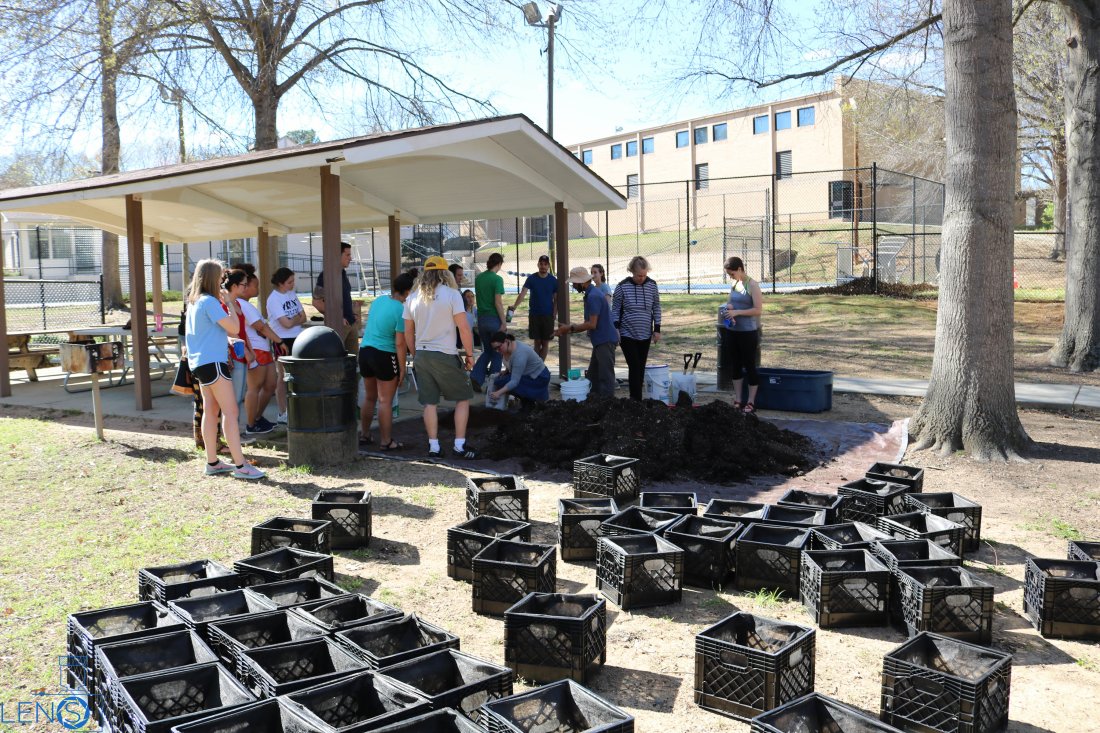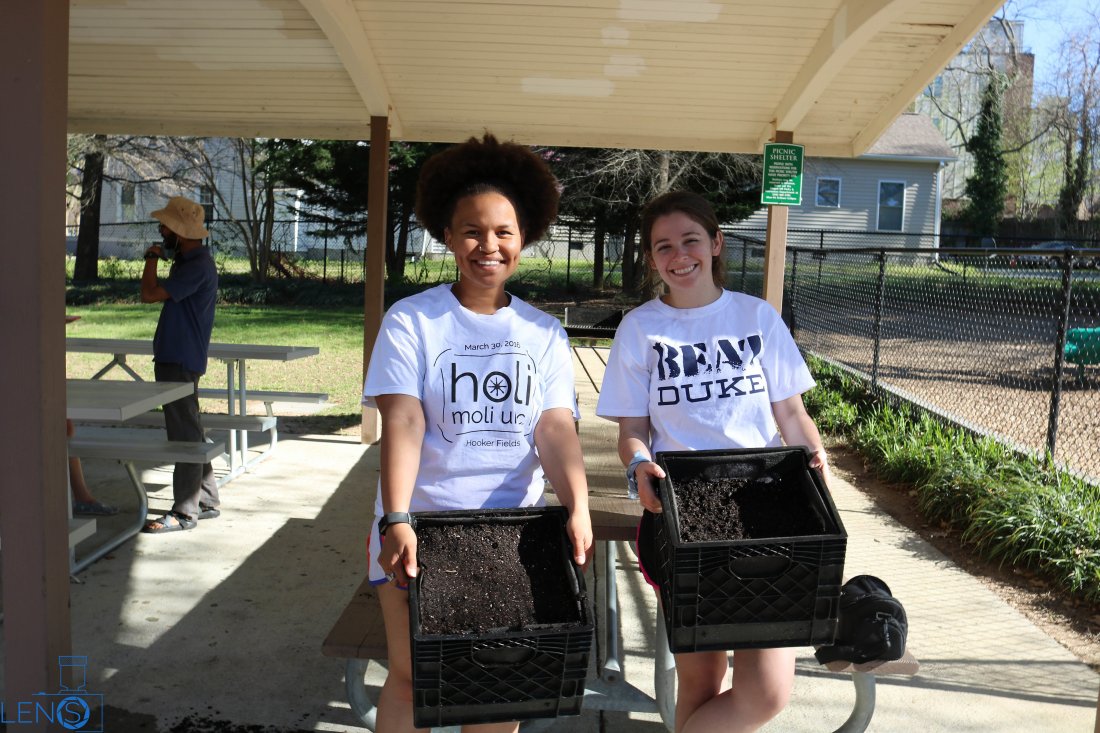By Sally Dillon

9 steps for (successfully) growing a plant:
- Line a milk crate or holed container with landscaping fabric
- Add ⅓ cup compost
- Add ⅓ cup peat moss with a scoop of lime
- Add ⅓ cup perlite or vermiculite
- Add ⅓ cup fertilizer (blood meal, bone meal or vegan alternative)
- Add seeds and pat them into the soil
- Water when needed
- Wait patiently for seeds to grow
- And, as someone near me said, “Keep an eye on it. If it doesn’t look healthy then take care of it.”
The recipe is pretty straightforward, but the process of gardening is far from that. People ask why their tomato plants have a white mildew on the stem. They want to know when the planting calendar starts or the purpose of adding lime to the soil. Then there’s the great debate of the correct compost-to-fertilizer ratio to use; the one used above comes from Mel’s Mix. Mel is the father of “square foot gardening.”

Gardening can seem complicated, but then again, so can people. So many varying characteristics, backgrounds, and traits define us: we are guitar players, graduate students, heavy sleepers, swimmers, coin collectors. Gardening, though, is one of those things that can bring completely different groups together in a seamless fashion. It helps people find their inner peas together, if you will. Something about digging your hands into the soil and exchanging gardening tips can cultivate more than plants, but community as well.

I witnessed this a couple of Saturdays ago: it was a hodgepodge group of people on a sunny March afternoon. We were all gathered behind the Hargraves Community Center in Carrboro, surrounded by milk crates and heapings of dirt. Everything was covered with a light layer of pollen, but that didn’t seem to bother anyone. After all, they were here to garden and gardening involves getting your hands (and clothes) a little dirty.
Hope Gardens (an organization that promotes food access in Chapel Hill through community projects and their own garden) and Growing Gardeners (an organization that promotes gardeners in the Northside neighborhood) partnered to put on a “Make Your Own Container Garden” workshop.
Ritam Chakabori, who works with Growing Gardeners, helped lead the workshop. He explained to us how powerful the small milk crate was. “The dairy industry loses millions in milk crates every year,” Ritam noted. He explained that people steal them for various projects, like gardening. Growing Gardeners doesn’t turn to such a life of thievery, but instead joins forces with local companies, such as Root Cellar and Maple View, to get supplies. The milk crate garden we were making could grow anything from okra to sweet potatoes.

As Ritam showed us how to make a container garden, he added little facts here and there: the small white specks in fertilizer are actually volcanic rocks called perlite, and using peat moss is a little controversial because getting it requires hurting the swamp ecosystem. As Ritam walked us through all the materials, people shared their tidbits of advice, their trials with gardening, as well as their favorite things to grow.
“It’s really exciting to be working outside and working with the earth, and a lot of it has to do with working with other people.” said Sierra Dunne, the senior advisor for Hope Gardens. She was helping shovel compost into people’s boxes. Sierra talked to me a little more about what the Hope Gardens partnership does with Growing Gardeners. She explained how when you live in a small neighborhood where the yards aren’t that big, like in Northside, it’s hard to grow anything. However, with the milk crate gardens, you gain the ability to grow fresh food for yourself.

In the Northside neighborhood, there has been a recent issue of gentrification, with college students pushing out residents of the historically African-American neighborhood. While it by no means can solve the issue at hand, the ‘grow your own garden’ initiative can help ease tensions in an area that no longer feels as tightly-knit as it once did.
For Kenyatta Upchurch, the milk crate represents a way for her parents to feel at home when they move to Carrboro to live with her. Kenyatta grew up working with plants and animals and is happy that her parents don’t have to leave that behind in coming to the city.
“Growing up on a farm was hard, but it was fruitful,” she said.
The lady standing next to her, Deborah Gilgore, has less of a green thumb, but just as much curiosity for working with plants.
“I kill every plant I touch,” she jokes.
Nevertheless, she hopes to use what she’s learned from the workshop today and do a garden-to-table unit with the kids at her home daycare.
Of all the stories though, nothing seemed more notable than one that Ritam told me. It was about Berta.
Berta is a refugee from Cameroon who lives close to Northside Elementary, where her child attends school . She had wanted to garden for a long time, but two big obstacles had stood in her way. First, she lives in public housing, so she can’t dig into the yard to plant because she doesn’t own it. Secondly, she has a disability which makes it hard to bend over and water the plants or dig up the stubborn layers of soil. Last year though, Growing Gardeners gave Berta twenty container gardens of rosemary, okra, and hot peppers. She was able to keep the boxes outside, and they were low maintenance enough for her to work with. This was probably her first time gardening since she had arrived in the United States, and as Ritam said, her face just lit up.
Nothing is quite as satisfying as seeing something so small as a seed grow into a useful living thing like a ripe red tomato plant or fully rounded blueberry bush. The same goes for community. What starts out as a passing comment or handing someone a milk crate with dirt and seeds can come into fruition and create worthwhile relationships.

Sierra had said it best when she told me the following:
“The way gardening builds community is really exciting to see. When you’re working in the dirt, you don’t have to worry about anything besides getting your hands dirty.”
Perhaps in the beginning recipe, “9 steps for (successfully) growing a plant”, I should switch the word “plant” for the word “community.”
After all, friendships can smell just as much like compost as they can a cup of coffee.

Photographs by Grace Hildebrand

One thought on “To Live Clean, You Have to Get Your Hands a Little Dirty”
Comments are closed.